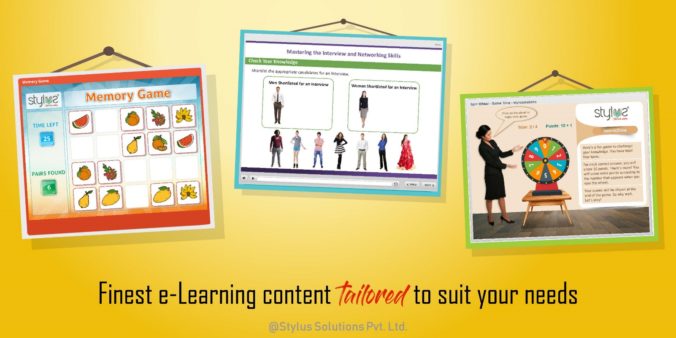While e learning companies in Mumbai are gaining importance because of the ever increasing need for online training material, the old school method of training in classrooms is not yet totally replaced. Can it be? Well, let’s dive into this thought.
Where are we today on the learning paradigm? Corporates are now converting most of their training material into online, while still having classroom sessions to part knowledge. This blend of sharing information through online courses and classroom sessions is called blended learning.
In blended learning, multiple approaches, methods and resources of teaching are implemented. These include ILTs, questionnaires, presentations, hand-outs, face to face lectures, online tutorials and discussions, assessments and seminars. Different tools, such as discussion boards, chat rooms, announcement centres and bots are used for interaction.
Usually e learning companies in Mumbai provide services for delivering e-learning and classroom training. Let’s have a look at some of the advantages and disadvantages of blended learning.
Advantages of Blended Learning:
-
Blended learning allows businesses and schools alike to make maximum use of the technologies and other resources that they have available.
-
The organization offering the course can create their own customised content.
-
The speed with which you can reach thousands of people is unmatched by traditional methods as they can all be reached simultaneously without the restrictions of time and space.
-
Blended learning provides learners the flexibility of time where the learners can access the course anytime and at anyplace until a meeting with the lecturer becomes compulsory.
-
It makes it easier to deal with educational administration and communication with all students. Virtual office hours make tutors far more accessible than in a strictly face-to-face scenario.
-
Blended learning caters to all modes of teaching modes – it caters to both kind of students who prefer online or face-to-face because it offers both in a single course.
-
For sessions held online, the communication between the teacher and student is open and everyone can benefit from it because everyone can view the responses sent by the teacher.
-
While blended learning takes advantage of the latest technology it also maintains the personal touch of having a facilitator answer individual queries.
Disadvantages of Blended Learning:
-
E-learning content development needs a lot of time and cost investment as it involves extensive work. For a start-up this may be challenging.
-
There is limited contact between the lecturer and students and so some of the dynamism that comes with face-to-face interaction can be lost.
-
Students often prefer the paper versions of the materials rather than see them online, so the face-to-face sessions in the blended programmes usually have a comparatively more successful “feel” for the students.
-
While elearning development in Mumbai and similar other urban areas is picking up, the rural areas, which forms a major portion of our country, still depends on classroom methods of learning due to lack of access to technology. Thus, blended learning can only be implemented in areas that have easy access to technology.
So we can conclude that blended learning makes learning more interactive and engaging, and motivates learners through greater opportunities for interactivity and collaboration. It helps in improving their communication skills and focusing on enhancing critical thinking skills. It also helps them to manage work and studies at their own speed and ability level.
